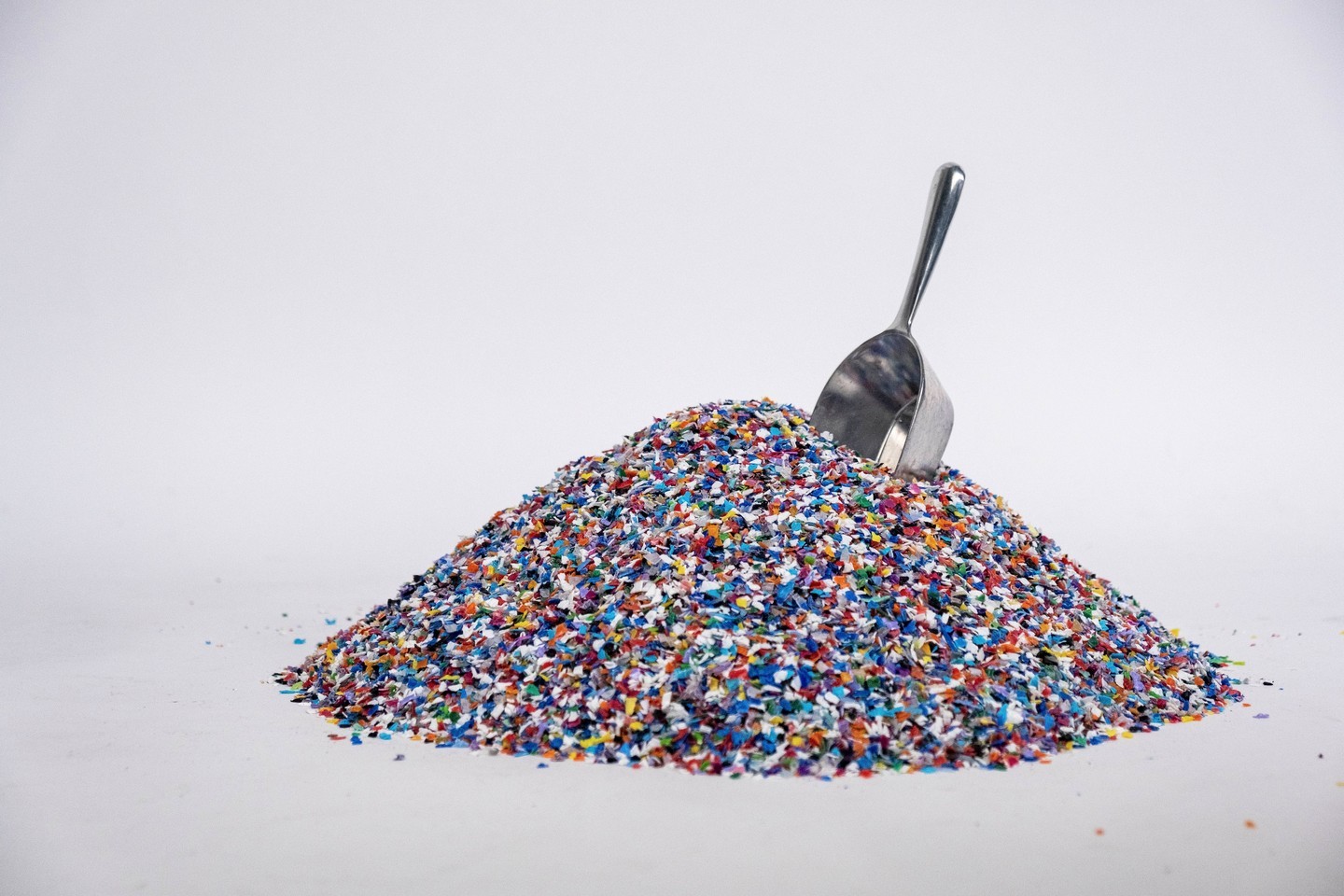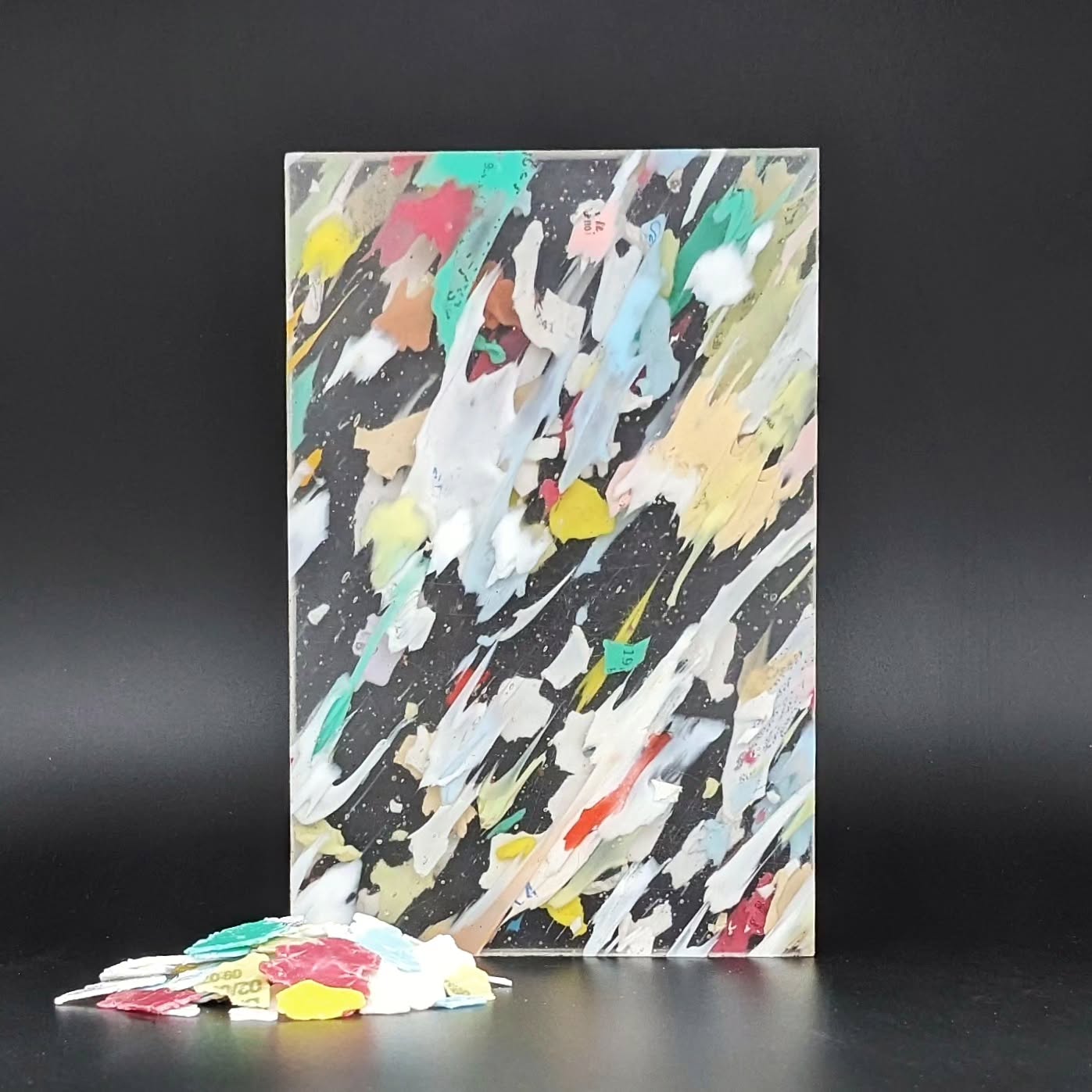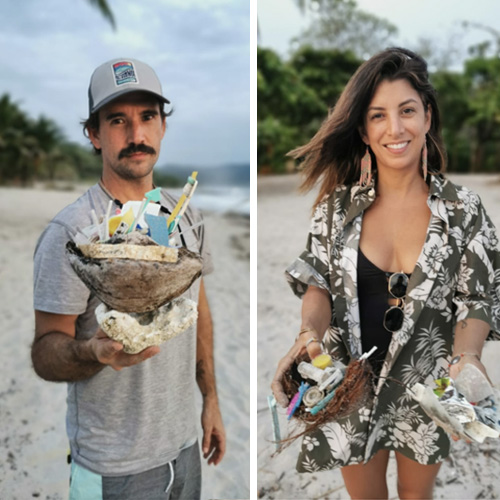
By turning everyday items into beautiful, lasting products, Joseph Klatt and Marble Plastics are challenging our perceptions of what waste looks like.

Redesigning waste: How design transforms our view of plastic
In a world drowning in plastic waste, design emerges as a powerful tool for transformation. Joseph Klatt, founder of Marble Plastics, believes that design can fundamentally reshape our relationship with plastic—turning what was once seen as disposable into a precious, long-lasting resource.
Reimagining plastic’s value
“One of the interesting things about processing plastic on a small scale is that it looks more recycled,” Klatt explains. Unlike mass-produced items that appear uniform and “cheap,” small-scale recycling reveals the material’s unique history. This approach challenges our perception of plastic, elevating it from a single-use commodity to a material with inherent value and beauty.
The aesthetic of recycled plastic tells a story. When you can see variations in color and texture, the material becomes more than just a means to an end. It becomes a narrative of transformation, of potential, of conscious choice.
Designing for circularity
Circularity begins with intentional design. Klatt emphasizes the importance of considering a product’s entire lifecycle from the moment of conception. This means:
- Reducing adhesives that complicate recycling
- Keeping materials mono-material for easier processing
- Clearly marking materials to facilitate future recycling
- Creating built-in systems for material recovery
“It starts with thinking about what is the end of life for this material and then working back from there,” Klatt notes. This approach isn’t just about recycling—it’s about reimagining how we value and interact with materials.

From single-use to sustainable
The shift requires us to see plastic differently. “Plastic is a material that will stick around for hundreds, if not thousands of years,” Klatt points out. “So in our view, it should be reserved for those cases where longevity matters.”
This perspective transforms plastic from an environmental villain to a potentially sustainable resource when used thoughtfully. Design becomes the bridge between wasteful consumption and responsible stewardship.
Practical innovation
Marble Plastics exemplifies this philosophy by creating products like furniture, countertops, and wall coverings from recycled materials. Each piece tells a story—perhaps made from bread tags or solo cups—demonstrating that waste can be beautiful, functional, and meaningful.

Design that speaks to sustainability
Marble Plastics’ approach resonates particularly with businesses that want to showcase their commitment to sustainability. “If you imagine a restaurant that has a focus on organic food and sustainability,” Klatt explains, “they could use sustainably harvested wood, but wood looks the same as another wood. It doesn’t necessarily scream that it’s sustainable.” In contrast, Marble Plastics’ products wear their sustainability credentials proudly through their distinctive aesthetic.
This visual storytelling is particularly powerful in commercial spaces. A recent collaboration with Kid Super, a designer who has worked with luxury brands like Chanel, demonstrates how recycled plastic can be elevated to high-end design. “We did a lot of furniture for their cafe in Williamsburg, Brooklyn,” Klatt shares. “The benches we did were bent into half circles and other shapes that really elevate plastic as a material and makes it look more high-end.”
Beyond aesthetics: Design as education
The power of design extends beyond creating beautiful objects—it’s about education through experience. When customers interact with these materials in upscale settings, it challenges their preconceptions about recycled materials. This subtle form of education can be more effective than traditional messaging about sustainability.
The commercial impact
The approach is gaining traction in the retail and hospitality sectors, where businesses are increasingly looking for ways to demonstrate their environmental commitments tangibly. As Klatt notes, these installations help “brands, restaurants, and retail stores show that they really do care about sustainability through our product, which looks very recycled.”

A vision for the future
The transformation of plastic waste into desirable design pieces represents more than just a creative solution to an environmental problem—it’s a blueprint for how we might reimagine other “waste” materials. By applying thoughtful design principles to environmental challenges, we can create solutions that are both sustainable and desirable.
The success of companies like Marble Plastics suggests that we’re entering a new era where sustainability and premium design are not just compatible but complementary. As more designers and businesses embrace this approach, we move closer to a future where waste is not just reduced but reimagined—where every material has the potential for beauty and purpose, waiting to be unlocked through innovative design.
The journey from waste to wonder isn’t just about creating beautiful objects—it’s about redesigning our relationship with materials and reshaping our understanding of value. Through thoughtful design, we’re not just solving environmental problems; we’re creating a new aesthetic language for sustainability, one that speaks of possibility rather than limitation.
Joseph Klatt’s work with Marble Plastics and Precious Plastic is a testament to the power of innovation and collaboration in tackling some of the most complex global challenges. To hear more about his insights and solutions for circular design, check out the full conversation on the adaPETation® Podcast.
LOOKING FOR MORE INSPIRATION?
The future of plastics is being redefined, and you can be a part of it. Listen to the full podcast with Joseph Klatt to delve deep into the world of circular design, Marble Plastics and Precious Plastic and the optimism it sends to the rest of the world.
Your support can usher in a new era where plastic, once the problem, becomes an integral part of the solution.
Share it
Useful Links
THE HISTORY OF PLASTIC
Throughout the history of plastic, PET has been crucial in keeping food fresh with lightweight and durable packaging solutions that have helped reduce food waste for almost a century. Learn all about the invention of plastic and the important role it has played feeding people and saving the lives of humans and elephants in the adaPETation® timeline of the history of plastic.





